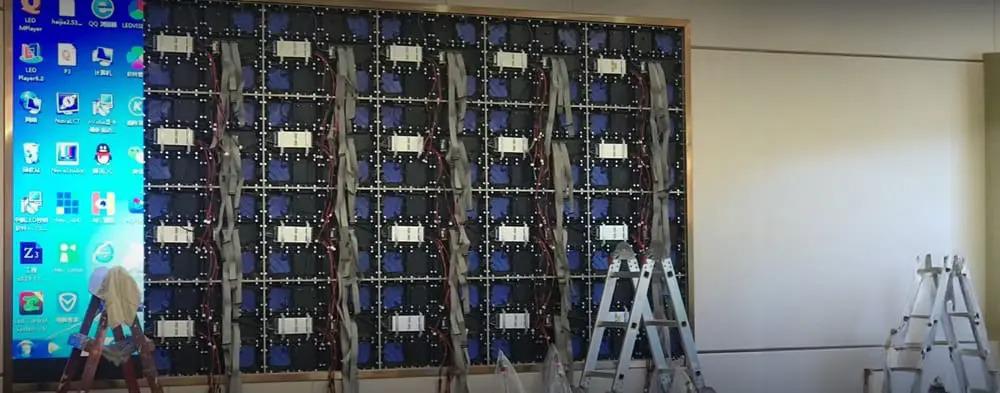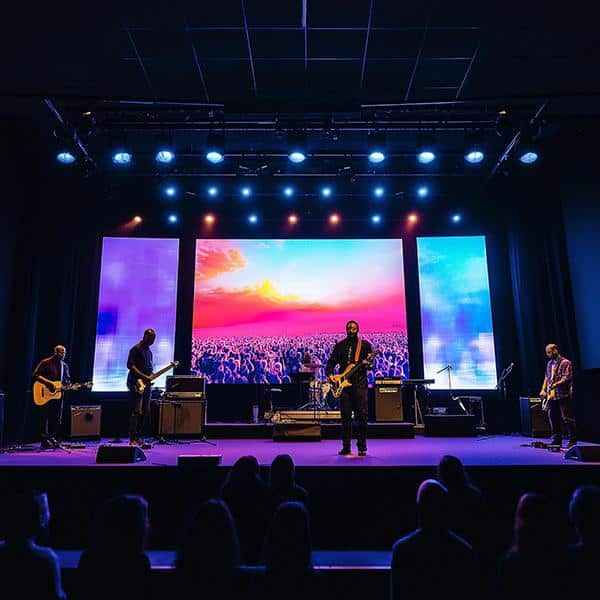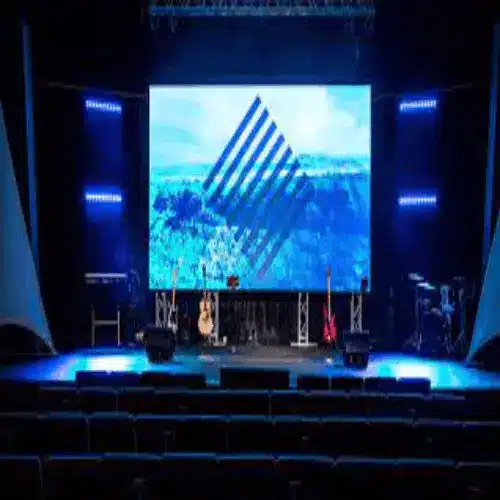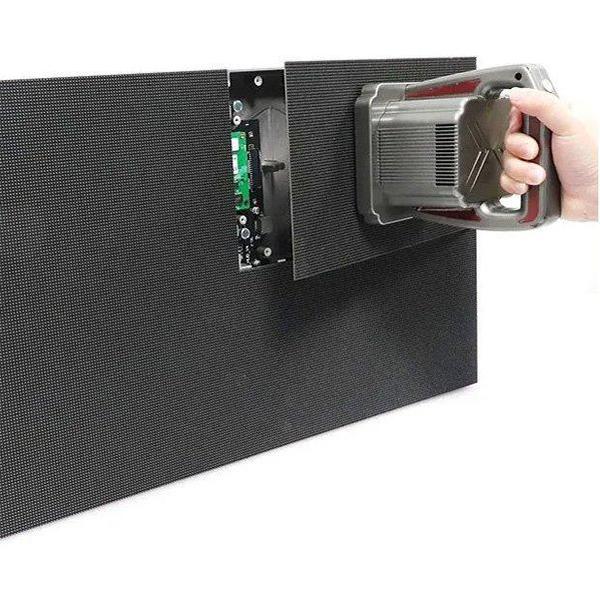LED displays have become an indispensable part of modern life, and are widely used in sports stadiums, commercial advertisements, traffic directions and entertainment activities. With their high brightness, high resolution and long life, large LED displays can provide people with a stunning visual experience.
However, the normal operation and long service life of LED displays cannot be achieved without proper care and maintenance.
This article details how to care for large LED displays to ensure performance, safety and longevity.

Understanding the Basic Structure of LED Displays
Before exploring maintenance methods, it is very important to understand the basic structure of LED display. Usually, LED display consists of the following parts:
- LED pixels: This is the core component of the display, which is composed of many small LED lights, capable of displaying different colors and brightness.
- Control system: It is responsible for controlling the brightness of the LED pixels and the content of the display, usually including control card, software and network interface.
- Power Supply System: Provides stable power supply for the LED display to ensure its normal operation.
- Heat dissipation system: Used to dissipate the heat generated by the LED display during operation to prevent overheating from affecting performance and life.
Understanding these basic structures can help us better find the focus of maintenance.
Daily Cleaning and Maintenance
1. Regular cleaning of the display surface
Large LED displays are easily affected by the external environment in the process of use, such as dust, dirt and bird droppings, etc. These substances will adhere to the surface of the display, resulting in poor display and even affecting the light output of the LED. These substances will adhere to the surface of the display, resulting in poor display effect, and even affect the light output of the LED. Therefore, regular cleaning of the display surface is essential.
The following points should be noted when cleaning:
- Use soft cloth and professional cleaner: Avoid using hard bristle brushes or corrosive cleaners that may damage the LED surface.
- Avoid spraying water or cleaners directly: moisture may enter the display and damage the electronic components.
- Cleaning under power failure: Make sure the display is completely powered off before cleaning to prevent electric shock or short circuit.
2. Inspect and replace damaged LED modules
During daily use, certain LED modules may become damaged or malfunction, such as dimming of light, shading of color, or going out completely. These problems, if not dealt with in time, may affect the display of the whole display or even lead to bigger failures.
In addition, the performance of some LED modules may deteriorate due to aging, resulting in uneven brightness or color deviation. Therefore, it is recommended to check the display effect of the LED display regularly and replace damaged or aged modules in time.

Maintenance of the control system
1. Update software and control system
The control system of a large LED display is responsible for processing and displaying images, text, and video content. The control system software may release new versions to fix bugs, optimize performance, or add new features. Therefore, it is recommended to check for software updates regularly and upgrade the system in a timely manner.
When upgrading the software, you should pay attention to the following points:
- Ensure stable power supply: If power is cut off during the upgrade process, it may cause system damage or data loss.
- Get update packages from official channels: Avoid downloading from unreliable sources to prevent malware or virus infection.
- Back up important data: Back up important data before upgrading to prevent accidents.
2. Check and maintain network connection
Many LED displays support control and data transmission via the network. If the display is connected to the network, it is recommended to check the network configuration regularly to ensure that it is in a stable and secure state.
Management of the power supply system
1. Ensure stable power supply
LED display requires high quality of power supply. Voltage fluctuations, transient voltages, or power disturbances may cause damage to the display’s circuitry, or even lead to equipment failure or shortened life.
Therefore, it is recommended to provide a stable power supply for large LED displays and consider installing a power conditioner or uninterruptible power supply (UPS) to prevent power abnormalities.
2. Avoid overloading
Large LED displays have high power consumption and overloading may cause the power supply system to overheat or burn out. Therefore, you should choose a suitable power supply unit according to the specifications of the display and avoid overloading.
3. Regular inspection of power cables and connectors
Power cords and connectors are important parts of the power supply system. If these components are aged, broken or loose, they may lead to power instability or short circuit. Therefore, it is recommended that power cords and connectors be inspected regularly and faulty parts be replaced promptly.
Maintenance of the cooling system
1. Cleaning the cooling fan and vents
Large LED displays generate a lot of heat during operation, and the cooling system is responsible for radiating this heat to the outside. If the cooling fan or vent is blocked by dust, it may cause the display to overheat, affecting its performance and life. Therefore, it is recommended to clean the cooling fan and vents regularly to ensure that the heat dissipation channels are clear.
2. Check the working status of the cooling system
LED displays are usually equipped with an intelligent cooling system, which can automatically adjust the fan speed according to the actual temperature. If the cooling system fails, it may cause the display to overheat. Therefore, it is recommended to check the working status of the cooling system regularly and repair or replace the faulty parts in time.
3. Pay attention to the ambient temperature
The ambient temperature for LED display is usually between -20°C and 60°C. If the ambient temperature is outside this range, the LED display may not be able to operate properly. If the ambient temperature is out of this range, it may affect the performance and life of the display. Therefore, it is recommended to install the large LED display in a well-ventilated area, away from direct sunlight or other high temperature sources.
Control of environmental factors
1. Avoid direct sunlight
Although large LED displays are usually designed for outdoor environments, prolonged direct sunlight may still cause damage to the display. The ultraviolet rays in sunlight may cause the LED surface to age and turn yellow, and the strong light may also affect the visibility of the display. Therefore, it is recommended to install a sunshade or choose a suitable mounting location to minimize the effects of sunlight on the display.
2. Prevent moisture from entering
LED display is very sensitive to moisture. Once moisture enters the interior, it may lead to short circuit or corrosion, which may seriously damage the device. Therefore, it is recommended to make sure the display is waterproof when installing it and regularly check whether the waterproof layer is intact. If the display is installed outdoors, make sure that its waterproof level meets the local weather conditions.
3. Prevent atmospheric corrosion
In some humid or salty environments, atmospheric corrosion may cause damage to the metal parts of the LED display. Therefore, it is recommended to check the metal structure of the display regularly and carry out rust prevention treatment in time.
Handling of emergencies
1. Power failure or black screen
If the LED display suddenly loses power or has a black screen, first of all, you should check whether the power cord and connector are loose or damaged. If the power system is normal, but the display still can not be turned on, it may be the internal circuit failure. At this time, you should contact a professional technician for maintenance.
2. Abnormal noise of the display
If the display makes an abnormal noise during operation, it may be a problem with the cooling fan or other mechanical parts. It is recommended to stop using it immediately and contact a technician for inspection and repair.
3. Protection against lightning strikes
LED displays installed outdoors may be threatened by lightning strikes. Lightning strikes may cause equipment damage or data loss. Therefore, it is recommended to install lightning protection devices and ensure that the display has a perfect grounding system.
Summarize
The performance and longevity of large LED displays depends on routine care and maintenance. By regularly cleaning the display surface, inspecting and replacing damaged LED modules, updating the control system software, ensuring a stable power supply, maintaining the cooling system, and controlling environmental factors, you can effectively extend the life of your LED display and ensure its optimal performance.
Understanding these maintenance tips will not only help them save on repair costs, but also enhance the LED display experience. Whether used for commercial advertising, sporting events or entertainment, large LED displays can bring people a unique visual enjoyment.



